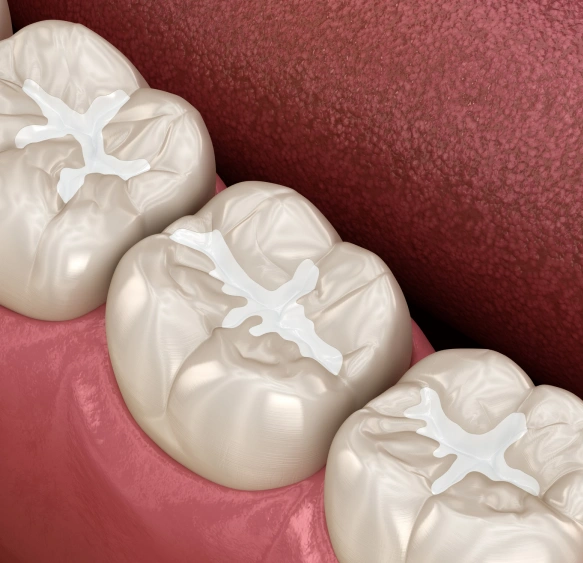Riverwalk

Prevent Cavities Before They Start with Sealants
Dental sealants are a thin, protective layer applied to the chewing surfaces of the back teeth—typically the molars and premolars. These teeth often have deep grooves that can trap food particles and bacteria, making them more prone to cavities. Sealants cover these grooves, creating a smoother surface that’s easier to clean and helps prevent decay. While sealants are durable and can last for years, they should be checked regularly to ensure they remain intact and effective.
Why Sealants Are a Smart Preventive Choice
Sealants provide an extra layer of protection for your teeth, particularly in areas that are more vulnerable to cavities. They’re a great preventive option for:
- Kids and Teens: Sealants are most effective when applied as soon as the first permanent molars appear—around age 6. They help guard against cavities throughout the cavity-prone years up to about age 16.
- Adults: If your teeth have deep grooves but no existing decay, sealants can still be beneficial in preventing future cavities.
- Young Children (Baby Teeth): In some cases, sealants may be recommended for baby teeth, especially if a child has deep grooves or is at a higher risk of developing cavities.
How Dental Sealants Are Applied
Getting dental sealants is a quick, painless procedure that takes only a few minutes per tooth. Here’s how it works:
- The tooth is thoroughly cleaned and dried.
- Cotton or a small barrier is placed to keep the area dry.
- A special solution is applied to gently roughen the surface, helping the sealant bond more effectively.
- The tooth is rinsed and dried again.
- The sealant is painted onto the chewing surface.
- It hardens either naturally or with the help of a special curing light.
To keep your sealants in great shape, remember to brush and floss daily, eat a balanced diet, and visit your dentist regularly. Sealants are an easy, effective way to protect your teeth and maintain a healthy smile for years to come.

